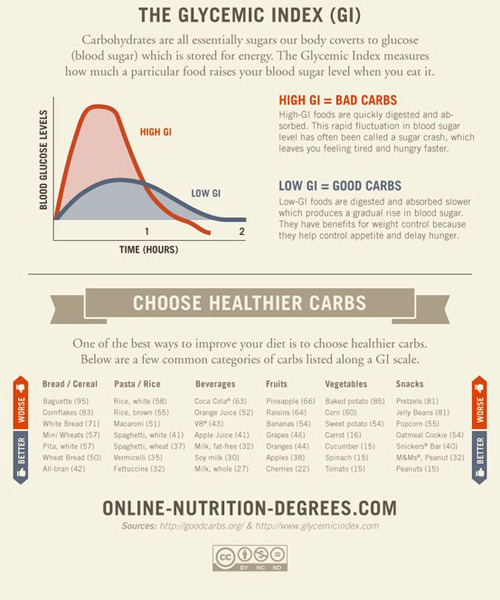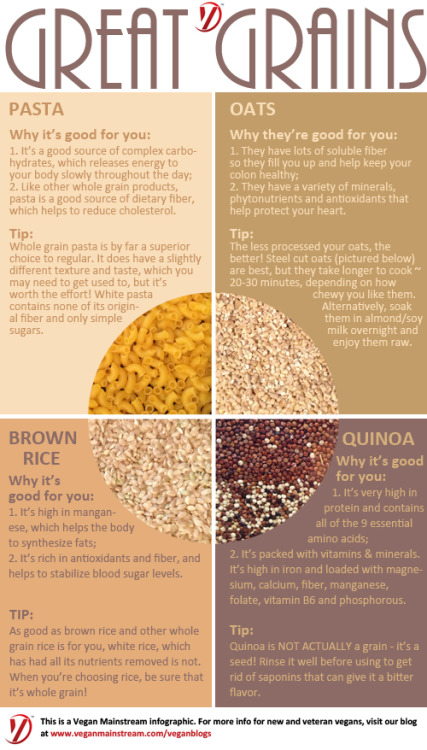Carbohydrates: Good Carbs Guide the Way
date: 2013-01-06  time: 19:30:50
time: 19:30:50
 time: 19:30:50
time: 19:30:50 INTRODUCTION
We've come a long way from the days when one of the knee-jerk answers to the question "What should I eat?" was "You can't go wrong with carbohydrates." We now know that carbohydrates, the staple of most diets, aren't all good or all bad. Some kinds promote health while others, when eaten often and in large quantities, actually increase the risk for diabetes and coronary heart disease.
The wild popularity of the Atkins, South Beach, and other low-carbohydrate diets led many Americans to believe that carbohydrates are "bad," the source of unflattering flab, and a cause of the obesity epidemic. That's a dangerous oversimplification, on a par with "fat is bad." Easily digested carbohydrates from white bread, white rice, pastries, sugared sodas, and other highly processed foods may, indeed, contribute to weight gain and interfere with weight loss. Whole grains, beans, fruits, vegetables, and other sources of intact carbohydrates do just the opposite - they promote good health.
Don't be misled by the blanket pronouncements on the dangers of carbohydrates. They are an important part of a healthy diet. Carbohydrates provide the body with the fuel it needs for physical activity and for proper organ function. The best sources of carbohydrates - fruits, vegetables, beans, and whole grains - deliver essential vitamins and minerals, fiber, and a host of important phytonutrients.

WHAT ARE CARBOHYDRATES?
Carbohydrates are found in a wide array of foods - bread, beans, milk, popcorn, potatoes, cookies, spaghetti, soft drinks, corn, and cherry pie. They also come in a variety of forms. The most common and abundant forms are sugars, fibers, and starches.
The basic building block of every carbohydrate is a sugar molecule, a simple union of carbon, hydrogen, and oxygen. Starches and fibers are essentially chains of sugar molecules. Some contain hundreds of sugars. Some chains are straight, others branch wildly.
Carbohydrates were once grouped into two main categories. Simple carbohydrates included sugars such as fruit sugar (fructose), corn or grape sugar (dextrose or glucose), and table sugar (sucrose). Complex carbohydrates included everything made of three or more linked sugars. Complex carbohydrates were thought to be the healthiest to eat, while simple carbohydrates weren't so great. It turns out that the picture is more complicated than that.
The digestive system handles all carbohydrates in much the same way - it breaks them down (or tries to break them down) into single sugar molecules, since only these are small enough to cross into the bloodstream. It also converts most digestible carbohydrates into glucose (also known as blood sugar), because cells are designed to use this as a universal energy source.
Fiber is an exception. It is put together in such a way that it can't be broken down into sugar molecules, and so it passes through the body undigested. Fiber comes in two varieties: soluble fiber dissolves in water, while insoluble fiber does not. Although neither type nourishes the body, they promote health in many ways. Soluble fiber binds to fatty substances in the intestines and carries them out as a waste, thus lowering low-density lipoprotein (LDL, or bad cholesterol). It also helps regulate the body's use of sugars, helping to keep hunger and blood sugar in check. Insoluble fiber helps push food through the intestinal tract, promoting regularity and helping prevent constipation. (Adults need at least 20 to 30 grams of fiber per day for good health. But most Americans get only about 15 grams a day.)

WHEN SUGAR MANAGEMENT GOES AWRY: INSULIN AND DIABETES
When you eat a food containing carbohydrates, the digestive system breaks down the digestible ones into sugar, which then enters the blood. As blood sugar levels rise, special cells in the pancreas churn out more and more insulin, a hormone that signals cells to absorb blood sugar for energy or storage. As cells sponge up blood sugar, its levels in the bloodstream begin to fall. That's when other cells in the pancreas start making glucagon, a hormone that tells the liver to start releasing stored sugar. This interplay of insulin and glucagon ensure that cells throughout the body, and especially in the brain, have a steady supply of blood sugar.
In some people, this cycle doesn't work properly. People with type 1 diabetes (once called insulin-dependent or juvenile diabetes) don't make enough insulin, so their cells can't absorb sugar. People with type 2 diabetes (once called non-insulin-dependent, or adult-onset diabetes) generally start out with a different problem - their cells don't respond well to insulin's "open up for sugar" signal. This condition, known as insulin resistance, causes blood sugar and insulin levels to stay high long after eating. Over time, the heavy demands made on the insulin-making cells wears them out, and insulin production slows, then stops.
Insulin resistance isn't just a blood sugar problem. It has also been linked with a variety of other problems, including high blood pressure, high levels of triglycerides, low HDL (good) cholesterol, and excess weight. In fact, it travels with these problems so often that the combination has been given the name metabolic syndrome. Alone and as part of the metabolic syndrome, insulin resistance can lead to type 2 diabetes, heart disease, and possibly some cancers.
Genes, a sedentary lifestyle, being overweight, and a diet rich in processed carbohydrates can each promote insulin resistance. (The combination is far worse.) Data from the Insulin Resistance Atherosclerosis Study suggests that cutting back on refined grains and eating more whole grains in their place can improve insulin sensitivity. As described in "Health Gains from Whole Grains", the benefit of eating whole grains extends far beyond insulin to helping prevent type 2 diabetes, atherosclerosis (the build-up of cholesterol-filled patches that clog and narrow artery walls), heart disease, colorectal cancer, and premature death from noncardiac, noncancer causes.

CARBOHYDRATES AND THE GLYCEMIC INDEX
Dividing carbohydrates into simple and complex makes sense on a chemical level. But it doesn't do much to explain what happens to different kinds of carbohydrates inside the body. For example, the starch in white bread and French-fried potatoes clearly qualifies as a complex carbohydrate. Yet the body converts this starch to blood sugar nearly as fast as it processes pure glucose. Fructose (fruit sugar) is a simple carbohydrate, but it has a minimal effect on blood sugar.
A new system, called the glycemic index, aims to classify carbohydrates based on how quickly and how high they boost blood sugar compared to pure glucose. Foods with a high glycemic index, like white bread, cause rapid spikes in blood sugar. Foods with a low glycemic index, like whole oats, are digested more slowly, causing a lower and gentler change in blood sugar. Foods with a score of 70 or higher are defined as having a high glycemic index; those with a score of 55 or below have a low glycemic index.
The most comprehensive list of the glycemic index of foods was published in the July 2002, issue of the American Journal of Clinical Nutrition. It included almost 750 foods, ranging from angel food cake to yams. The University of Sydney in Australia maintains an updated searchable database at www.glycemicindex.com that now has almost 1,600 entries.
Diets rich in high-glycemic-index foods, which cause quick and strong increases in blood sugar levels, have been linked to an increased risk for diabetes, heart disease, and overweight, and there is preliminary work linking high-glycemic diets to age-related macular degeneration, ovulatory infertility, and colorectal cancer. Foods with a low glycemic index have been shown to help control type 2 diabetes and improve weight loss. Other studies, though, have found that the glycemic index has little effect on weight or health. This sort of flip-flop is part of the normal process of science, and it means that the true value of the glycemic index remains to be determined. In the meantime, eating whole grains, beans, fruits, and vegetables - all foods with a low glycemic index - is indisputably good for many aspects of health.
One of the most important factors that determine a food's glycemic index is how much it has been processed. Milling and grinding removes the fiber-rich outer bran and the vitamin- and mineral-rich inner germ, leaving mostly the starchy endosperm.
One thing that a food's glycemic index does not tell us is how much digestible carbohydrate it delivers. Take watermelon as an example. The sweet-tasting fruit has a very high glycemic index. But a slice of watermelon has only a small amount of carbohydrate per serving (as the name suggests, watermelon is made up mostly of water). That's why researchers developed a related way to classify foods that takes into account both the amount of carbohydrate in the food and the impact of that carbohydrate on blood sugar levels. This measure is called the glycemic load. A food's glycemic load is determined by multiplying its glycemic index by the amount of carbohydrate it contains. In general, a glycemic load of 20 or more is high, 11 to 19 is medium, and 10 or under is low.
You can't use the glycemic index to rule your dietary choices. For example, a Snickers bar has a glycemic index of 41, marking it as a low glycemic index food. But it is far from a health food. Instead, use it as a general guide. Whenever possible, replace highly processed grains, cereals, and sugars with minimally processed whole grain products. And only eat potatoes - once on the list of preferred complex carbohydrates - occasionally because of their high glycemic index and glycemic load.

LOW-CARBOHYDRATE DIETS: CHOOSE GOOD CARBS, NOT NO CARBS
Some popular diets treat carbohydrates as if they are evil, the root of all body fat and excess weight. That was certainly true for the original Atkins diet, which popularized the no-carb approach to dieting. And there is some evidence that a low-carbohydrate diet may help people lose weight more quickly than a low-fat diet, although so far, that evidence is short term.
In two short, head-to-head trials, low-carb approaches worked better than low-fat diets. A later year-long study, published in 2007 in the Journal of the American Medical Association, showed the same thing. In this study, overweight, premenopausal women went on one of four diets: Atkins, Zone, Ornish, or LEARN, a standard low-fat, moderately high-carbohydrate diet. The women in all four groups steadily lost weight for the first six months, with the most rapid weight loss occurring among the Atkins dieters. After that, most of the women started to regain weight. At the end of a year, it looked as though the women in the Atkins group had lost the most weight, about 10 pounds, compared with a loss of almost 6 pounds for the LEARN group, 5 for the Ornish group, and 3.5 for the Zone group. Levels of harmful LDL, protective HDL, and other blood lipids were at least as good among women on the Atkins diet as among those on the low-fat diet.
If you read the fine print of the study, though, it turns out that few of the women actually stuck with their assigned diets. Those on the Atkins diet were supposed to limit their carbohydrate intake to 50 grams a day, but they took in almost triple that amount. The Ornish dieters were supposed to limit their fat intake to under 10 percent of their daily calories, but they got about 30 percent from fat. There were similar deviations for the Zone and LEARN groups.
What about longer term studies? POUNDS LOST (Preventing Overweight Using Novel Dietary Strategies), a two-year head-to-head trial comparing different weight loss strategies found that low-carb, low-fat, and Mediterranean-style diets worked equally well in the long run, and that there was no speed advantage for one diet over another. What this and other diet comparisons tell us is that sticking with a diet is more important than the diet itself.
No one knows the long-term effects of eating little or no carbohydrates. Equally worrisome is the inclusion of unhealthy fats in some of these diets.
If you want to go the lower carb route, try to include some fruits, vegetables, and whole grains every day. They contain a host of vitamins, minerals, and phytonutrients that are essential for good health and that you can't get out of a supplement bottle. And do your heart a favor by choosing healthy fats and proteins to go along with those healthy sources of carbohydrate: A 20-year prospective study of 82,802 women looked at the relationship between lower carbohydrate diets and heart disease; a subsequent study looked at lower carbohydrate diets and risk of diabetes. Women who ate low-carbohydrate diets that were high in vegetable sources of fat or protein had a 30 percent lower risk of heart disease and a modestly lower risk of type 2 diabetes, compared to women who ate high-carbohydrate, low-fat diets. But women who ate low-carbohydrate diets that were high in animal fats or proteins did not have a reduced risk of heart disease or diabetes.

ADDING GOOD CARBOHYDRATES
For optimal health, get your grains intact from foods such as whole wheat bread, brown rice, whole grain pasta, and other possibly unfamiliar grains like quinoa, whole oats, and bulgur. Not only will these foods help protect you against a range of chronic diseases, they can also please your palate and your eyes.
Until recently, you could only get whole-grain products in organic or non-traditional stores. Today they are popping up in more and more mainstream grocery stores. Here are some suggestions for adding more good carbohydrates to your diet:
- Start the day with whole grains. If you're partial to hot cereals, try steel-cut oats. If you're a cold cereal person, look for one that lists whole wheat, whole oats, or other whole grain first on the ingredient list.
- Use whole grain breads for lunch or snacks. Check the label to make sure that whole wheat or another whole grain is the first ingredient listed.
- Bag the potatoes. Instead, try brown rice or even "newer" grains like bulgur, wheat berries, millet, or hulled barley with your dinner.
- Pick up some whole wheat pasta. If the whole grain products are too chewy for you, look for those that are made with half whole-wheat flour and half white flour.
- Bring on the beans. Beans are an excellent source of slowly digested carbohydrates as well as a great source of protein.







